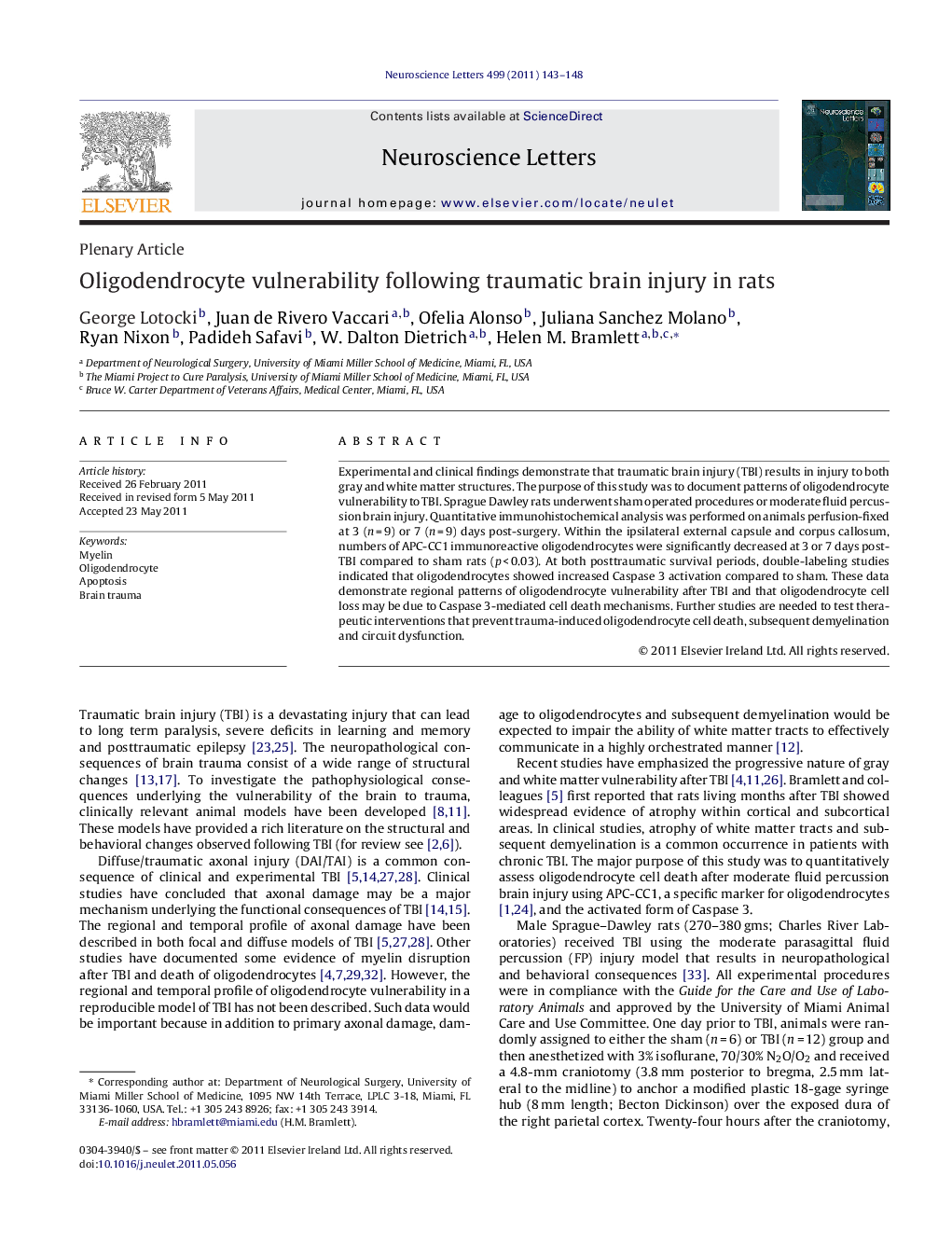| کد مقاله | کد نشریه | سال انتشار | مقاله انگلیسی | نسخه تمام متن |
|---|---|---|---|---|
| 4344914 | 1296696 | 2011 | 6 صفحه PDF | دانلود رایگان |

Experimental and clinical findings demonstrate that traumatic brain injury (TBI) results in injury to both gray and white matter structures. The purpose of this study was to document patterns of oligodendrocyte vulnerability to TBI. Sprague Dawley rats underwent sham operated procedures or moderate fluid percussion brain injury. Quantitative immunohistochemical analysis was performed on animals perfusion-fixed at 3 (n = 9) or 7 (n = 9) days post-surgery. Within the ipsilateral external capsule and corpus callosum, numbers of APC-CC1 immunoreactive oligodendrocytes were significantly decreased at 3 or 7 days post-TBI compared to sham rats (p < 0.03). At both posttraumatic survival periods, double-labeling studies indicated that oligodendrocytes showed increased Caspase 3 activation compared to sham. These data demonstrate regional patterns of oligodendrocyte vulnerability after TBI and that oligodendrocyte cell loss may be due to Caspase 3-mediated cell death mechanisms. Further studies are needed to test therapeutic interventions that prevent trauma-induced oligodendrocyte cell death, subsequent demyelination and circuit dysfunction.
► Oligodendrocytes are vulnerable after traumatic brain injury.
► Oligodendrocytes may die by Caspase 3 mediated events.
► Oligodendrocytic cell death may contribute to progressive white matter injury observed after TBI.
Journal: Neuroscience Letters - Volume 499, Issue 3, 25 July 2011, Pages 143–148